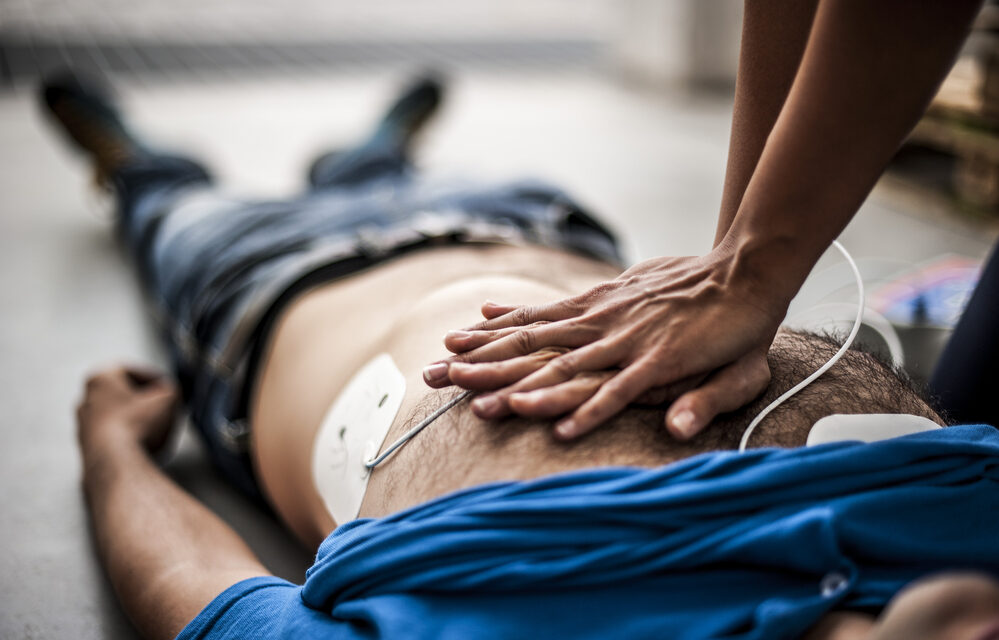By Annette Pinder
As we all prayed together recently for Damar Hamlin’s recovery, I knew I had to reach out to Vijay Iyer, MD, Ph.D., an interventional cardiologist at Great Lakes Cardiovascular, Chief of the Department of Cardiology at UB Jacobs School of Medicine, and Director of Structural Heart Interventions at Kaleida Health. The first thing Dr. Iyer said is, “It’s never too late to learn cardiopulmonary resuscitation (CPR).”

Damar Hamlin’s collapse due to cardiac arrest during the Buffalo Bills and Cincinnati Bengals game in January highlighted the importance of CPR and AED training. “It should be mandatory for every capable individual to be trained in CPR,” said Dr. Iyer, emphasizing that every minute of delay in administering chest compressions results in a 10% loss of survivability in patients.
Hamlin owes his survival following his cardiac arrest to the excellent immediate care he received from trained medics and staff who responded to him with life-saving speed and skill. In addition to receiving CPR, an automated external defibrillator (AED) was used to restart Hamlin’s heart and restore his pulse on the field, while a tube was also placed down his throat to help him breathe.
Cardiac arrest occurs when the heart suddenly stops beating. It is not the same as a heart attack, but a person who has a heart attack can also suffer from cardiac arrest. According to the American Heart Association (AHA), 3.8 million people experience cardiac arrests worldwide, but fewer than 3% are helped with CPR and an AED, and only 8% to 12% survive. In the U.S., there are 350,000 out-of-hospital cardiac arrests each year. While many of these individuals could have been saved by bystanders, only 11% of Americans know the correct pacing for performing chest compressions (100 to 120 beats per minute), and only 18% are current in their CPR training. Few realize that mouth-to-mouth resuscitation is no longer needed if you are using hands-only CPR.
Another problem is that despite many AEDs being placed in schools and organizations, there may not be anyone trained in their use. Fortunately, once activated, an AED provides guidance to the user with verbal instructions. “They are virtually idiot-proof,” says Dr. Iyer.
Dr. Iyer points to a life-saving state-of-the-art ECMO truck in Edina, Minnesota that is ready to respond 24/7 to cardiac arrest incidents. “ECMO, which is short for extracorporeal membrane oxygenation, is similar to a heart-lung by-pass machine used in open-heart surgery. It pumps and oxygenates a patient’s blood outside the body, allowing the heart and lungs to rest,” explains Dr. Iyer. Minnesota’s ECMO truck is the first of its kind in the world, made possible by Dr. Demetris Yannopoulos, Director of the Center for Resuscitation Medicine at the University of Minnesota, and a friend of Dr. Iyer. “We can take over the circulation of the patient by putting tubes inside their veins and arteries, take the blood out and oxygenate it, pump it back in with pressure, effectively bypassing the heart and lungs,” says Dr. Yannopoulos.
Dr. Iyer looks forward to the day when an ECMO truck is available in our own community. He also hopes that what we saw happen to Darmar Hamlin will encourage everyone to learn CPR and use the AEDs available to us.
Watch an upcoming television show featuring Dr. Iyer and Dr. Yannopoulos that will include important and life-saving information. Hear from Dr. Kenneth Snyder who cared for Damar Hamlin here in Buffalo. See a demonstration of hands-only CPR, and an AED machine courtesy of The American Heart Association by Annette Adamczak, who lost her high-school-aged daughter to cardiac arrest. Learn about the world’s first ECMO truck being used in Minnesota. Part 1 of this half-hour show airs on Wednesday, February 15 at 8 pm and Saturday, February 18 at noon. Part 2 airs on Wednesday, February 22, and Saturday, February 25 at noon.












